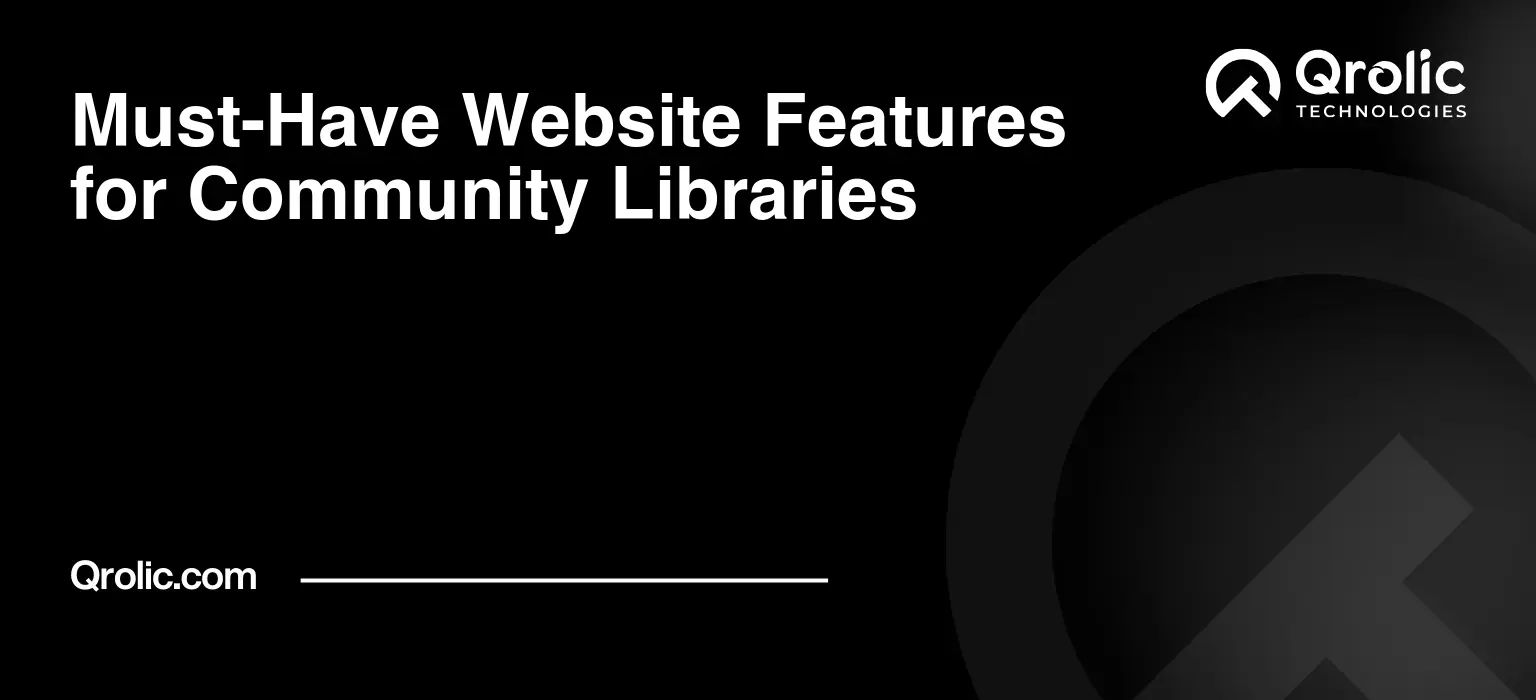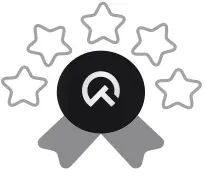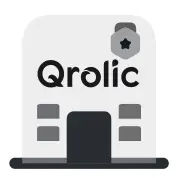Quick Summary:
- Your library website is a vital 24/7 community portal.
- Essential features: digital catalog, event calendar, account management.
- Enhance with online learning, resources, and community forums.
- Ensure mobile-friendly design, security, and accessibility.
Table of Contents
- The Digital Age Library: More Than Just Books
- Why a Robust Library Website is Non-Negotiable
- Core Features: Building a Solid Foundation
- 1. The Digital Catalog: Your Library’s Heartbeat
- What it is:
- Why you need it:
- Essential Features of a Digital Catalog:
- How to optimize your Digital Catalog:
- 2. Event Calendar: The Heartbeat of Your Community
- What it is:
- Why you need it:
- Essential Features of an Event Calendar:
- How to optimize your Event Calendar:
- 3. Account Management: Empowering Your Patrons
- What it is:
- Why you need it:
- Essential Features of Account Management:
- How to optimize your Account Management:
- 4. Contact Information and Hours: Keeping Users Informed
- What it is:
- Why you need it:
- Essential Elements of Contact Information and Hours:
- How to optimize Contact Information and Hours:
- 5. News and Announcements: Staying Connected
- What it is:
- Why you need it:
- Essential Features of News and Announcements:
- How to optimize your News and Announcements:
- Enhanced Features: Taking Your Website to the Next Level
- 1. Online Resources: A Treasure Trove of Information
- What it is:
- Why you need it:
- Types of Online Resources:
- Essential Features for Online Resources:
- How to optimize your Online Resources:
- 2. Online Learning and Tutorials: Empowering Lifelong Learners
- What it is:
- Why you need it:
- Types of Online Learning and Tutorials:
- Essential Features for Online Learning and Tutorials:
- How to optimize your Online Learning and Tutorials:
- 3. Community Forums: Fostering Connections
- What it is:
- Why you need it:
- Essential Features for Community Forums:
- How to optimize your Community Forums:
- 4. Digital Media Lab Booking: Streamlining Access
- What it is:
- Why you need it:
- Essential Features for Digital Media Lab Booking:
- How to optimize your Digital Media Lab Booking:
- 5. Multilingual Support: Reaching Every Member
- What it is:
- Why you need it:
- Options for Multilingual Support:
- Essential Considerations for Multilingual Support:
- How to optimize your Multilingual Support:
- Technical Considerations: Behind the Scenes
- 1. Mobile Responsiveness: Meeting Users Where They Are
- 2. Accessibility: Inclusive Design
- 3. Security: Protecting User Data
- 4. Search Engine Optimization (SEO): Helping People Find You
- 5. Website Performance: Speed and Reliability
- Qrolic Technologies: Your Partner in Digital Transformation
- Conclusion: Investing in Your Community’s Future
The Digital Age Library: More Than Just Books
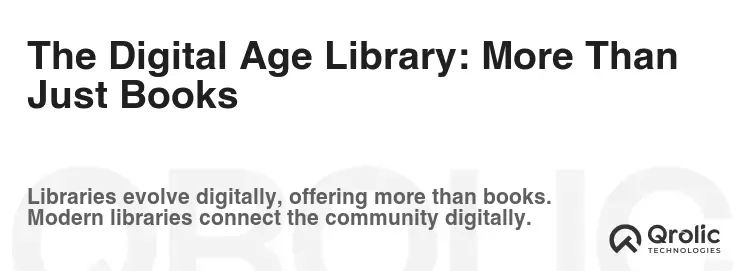
Libraries have always been cornerstones of communities, bastions of knowledge, and safe havens for learning. But in the digital age, the role of the community library is evolving. A library’s website is no longer just an online brochure; it’s a crucial portal that connects the library to its community, extends its reach, and provides access to resources and services 24/7. To thrive in this digital landscape, a community library website must offer specific features that cater to the needs of modern users. We’re talking not just survival, but flourishing. This isn’t about keeping up; it’s about leading the way.
Why a Robust Library Website is Non-Negotiable
Imagine a world without readily accessible information. Scary, right? That’s precisely what a poorly designed or outdated library website risks creating for its community. A well-equipped website provides:
- Accessibility: Breaking down barriers, geographical or otherwise, ensuring information and resources are available to everyone.
- Convenience: Letting users access library services, resources, and information from the comfort of their homes or on the go.
- Engagement: Fostering a sense of community, promoting library events, and encouraging participation.
- Relevance: Staying current with user needs and expectations in the digital age.
- Efficiency: Streamlining library operations, such as managing accounts, reservations, and inquiries.
The key here is understanding that your website is a virtual extension of your physical library. Think of it as your 24/7 librarian, always ready to assist and inform. The more features you integrate, the stronger your online presence and the better you serve your community.
Core Features: Building a Solid Foundation
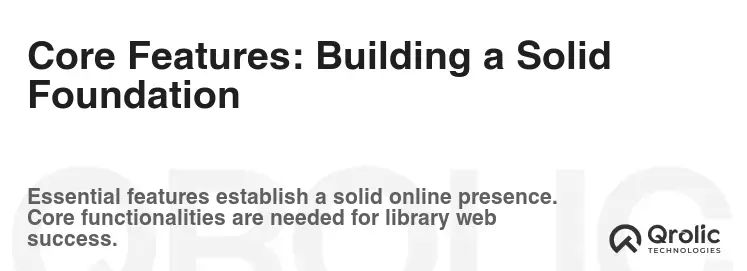
Before we dive into the bells and whistles, let’s cover the essential components that every community library website must possess. These are the bedrock upon which you will build your digital presence.
1. The Digital Catalog: Your Library’s Heartbeat
The digital catalog is, without a doubt, the most vital component. It’s the gateway to your entire collection and should be easily searchable and user-friendly. A frustrating catalog experience can drive users away faster than you can say “Dewey Decimal System.”
What it is:
A searchable database of all materials (books, ebooks, audiobooks, movies, music, etc.) available at the library.
Why you need it:
- Allows users to browse and discover items from anywhere.
- Provides details about each item, including title, author, publication date, description, availability, and cover image.
- Enables users to place holds on items that are currently checked out.
- Integrated with the library’s circulation system for real-time availability updates.
Essential Features of a Digital Catalog:
- Advanced Search: Go beyond simple keyword searches. Offer advanced search options such as author, title, subject, ISBN, and publication date.
- Filtering and Sorting: Allow users to narrow down their search results by format (book, ebook, audiobook, etc.), genre, audience (adult, children, teen), and other relevant criteria. Sorting options (relevance, title, author, publication date) are also crucial.
- Item Details Pages: Each item in the catalog should have a dedicated page with comprehensive information, including a synopsis, reviews (if available), related items, and availability across different branches (if applicable).
- Hold Placement and Management: Users should be able to easily place holds on items that are checked out and manage their holds through their online account.
- Wish List Functionality: Enable users to create and save wish lists of items they are interested in borrowing in the future.
- Integration with OverDrive/Libby: Seamlessly integrate access to your digital collections (ebooks, audiobooks) through OverDrive or the Libby app directly from the catalog.
- Mobile-Friendly Design: Ensure the catalog is fully responsive and accessible on mobile devices.
- Accessibility Compliance: Adhere to accessibility standards (WCAG) to ensure the catalog is usable by people with disabilities.
How to optimize your Digital Catalog:
- High-Quality Metadata: Ensure your catalog records are complete, accurate, and up-to-date.
- Keywords: Optimize item descriptions with relevant keywords to improve search results.
- User Testing: Conduct user testing to identify and address any usability issues.
- Regular Updates: Keep the catalog updated with new materials and remove outdated information.
- Schema Markup: Implement schema markup on your item pages to provide search engines with rich information about your catalog.
2. Event Calendar: The Heartbeat of Your Community
An active library is a thriving library. The event calendar is your tool to showcase all the exciting programs, workshops, and activities happening at your library. It’s how you attract people through the door and foster a sense of community.
What it is:
A comprehensive calendar of events happening at the library, including story times, book clubs, workshops, lectures, and other programs.
Why you need it:
- Informs the community about upcoming events and activities.
- Encourages participation and engagement.
- Promotes the library as a vibrant community hub.
- Provides details about each event, including date, time, location, description, target audience, and registration information.
Essential Features of an Event Calendar:
- Easy Navigation: Use a clear and intuitive calendar interface. Users should be able to easily browse events by date, category, and location (if applicable).
- Detailed Event Listings: Each event should have a dedicated page with complete information, including a description, date, time, location, target audience, any associated fees, and speaker information.
- Registration Functionality: Allow users to register for events online. Integrate with a registration system if necessary.
- Filtering and Search: Enable users to filter events by category (e.g., children’s programs, adult programs, book clubs), age group, and location. A search function is also essential.
- Recurring Events: Support recurring events (e.g., weekly story time) and allow users to easily add them to their personal calendars.
- Calendar Integration: Allow users to export events to their personal calendars (Google Calendar, Outlook, iCal).
- Prominent Placement: The event calendar should be prominently displayed on the library’s website.
- Mobile-Friendly Design: Ensure the calendar is fully responsive and accessible on mobile devices.
- Accessibility Compliance: Adhere to accessibility standards (WCAG) to ensure the calendar is usable by people with disabilities.
How to optimize your Event Calendar:
- Eye-Catching Visuals: Use high-quality images and videos to promote events.
- Compelling Descriptions: Write engaging descriptions that highlight the benefits of attending each event.
- Social Media Promotion: Promote your events on social media platforms.
- Email Marketing: Send out email newsletters with event updates and reminders.
- Partner with Community Organizations: Collaborate with local organizations to promote your events to a wider audience.
- Collect Feedback: Gather feedback from attendees to improve future events.
3. Account Management: Empowering Your Patrons
Giving users control over their library accounts is crucial for convenience and efficiency. An effective account management system allows users to manage their holds, renewals, fines, and personal information online.
What it is:
A system that allows users to manage their library accounts online.
Why you need it:
- Provides users with convenient access to their account information.
- Reduces the workload for library staff.
- Enables users to manage their holds, renewals, and fines online.
- Allows users to update their contact information.
Essential Features of Account Management:
- Secure Login: Implement a secure login system to protect user data.
- Holds Management: Allow users to view and manage their holds, including canceling holds and suspending holds.
- Renewals: Enable users to renew eligible items online.
- Fines and Fees: Provide users with information about their fines and fees and allow them to pay online (if applicable).
- Contact Information Updates: Allow users to update their contact information, such as their address, phone number, and email address.
- Reading History: (Optional) Allow users to track their reading history.
- Privacy Settings: Give users control over their privacy settings.
- Accessibility Compliance: Adhere to accessibility standards (WCAG) to ensure the account management system is usable by people with disabilities.
How to optimize your Account Management:
- Clear and Concise Instructions: Provide clear and concise instructions on how to use the account management system.
- User-Friendly Interface: Design an intuitive and user-friendly interface.
- Mobile-Friendly Design: Ensure the account management system is fully responsive and accessible on mobile devices.
- Security Measures: Implement robust security measures to protect user data.
- Regular Monitoring: Monitor the system for any security vulnerabilities.
- Offer Support: Provide users with support if they have any questions or issues.
4. Contact Information and Hours: Keeping Users Informed
This may seem obvious, but ensuring your library’s contact information and hours are readily available and accurate is essential. Don’t make users hunt for basic information!
What it is:
Clear and accurate information about the library’s contact details and operating hours.
Why you need it:
- Allows users to easily contact the library.
- Informs users about the library’s hours of operation.
- Prevents frustration and wasted trips.
- Builds trust and credibility.
Essential Elements of Contact Information and Hours:
- Physical Address: Provide the library’s full physical address.
- Phone Number: List the library’s phone number.
- Email Address: Provide the library’s email address or a contact form.
- Hours of Operation: Clearly display the library’s hours of operation for each day of the week.
- Holiday Closures: Post information about holiday closures and special hours.
- Branch Information: If the library has multiple branches, provide contact information and hours for each branch.
- Map Integration: Embed a map showing the library’s location.
How to optimize Contact Information and Hours:
- Prominent Placement: Place contact information and hours prominently on the library’s website, preferably on the homepage and in the footer.
- Consistent Information: Ensure that the contact information and hours are consistent across all platforms (website, social media, Google My Business).
- Regular Updates: Update the information whenever there are any changes to the library’s hours or contact details.
- Mobile-Friendly Design: Ensure the information is easily accessible on mobile devices.
- Schema Markup: Implement schema markup to provide search engines with structured data about your library’s contact information and hours.
5. News and Announcements: Staying Connected
Use a news and announcements section to share important updates, library closures, new services, and other relevant information with your community. This keeps patrons informed and engaged.
What it is:
A section of the website dedicated to sharing news, announcements, and updates about the library.
Why you need it:
- Keeps the community informed about important news and events.
- Promotes library services and programs.
- Builds relationships with users.
- Establishes the library as a trusted source of information.
Essential Features of News and Announcements:
- Clear and Concise Headlines: Use clear and concise headlines to attract attention.
- Compelling Content: Write engaging and informative articles.
- Date Stamps: Include date stamps to indicate the publication date of each article.
- Categories/Tags: Use categories and tags to organize articles by topic.
- Search Functionality: Allow users to search for specific articles.
- RSS Feed: Provide an RSS feed so users can subscribe to updates.
- Social Sharing Buttons: Include social sharing buttons so users can easily share articles on social media.
- Prominent Placement: Place the news and announcements section prominently on the library’s website.
How to optimize your News and Announcements:
- Regular Updates: Publish new content regularly to keep users engaged.
- High-Quality Images: Use high-quality images to enhance the visual appeal of your articles.
- Keywords: Optimize your articles with relevant keywords.
- Promote on Social Media: Share your articles on social media platforms.
- Email Marketing: Include news and announcements in your email newsletters.
- Gather Feedback: Solicit feedback from users to improve your content.
Enhanced Features: Taking Your Website to the Next Level
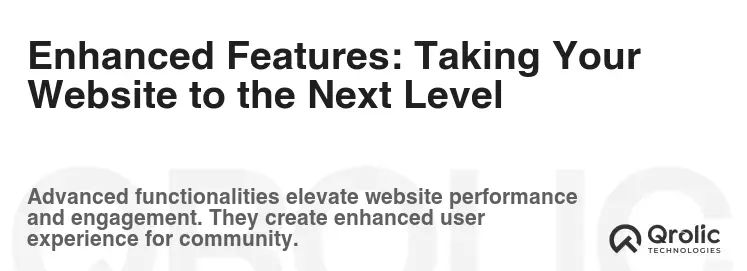
Once you have the core features in place, consider adding these enhanced features to truly elevate your library’s website and provide an exceptional user experience.
1. Online Resources: A Treasure Trove of Information
Provide access to a wide range of online resources, such as databases, research tools, e-learning platforms, and digital archives. This extends the library’s reach beyond its physical walls.
What it is:
A collection of online databases, research tools, e-learning platforms, and digital archives that users can access through the library’s website.
Why you need it:
- Provides users with access to a wealth of information and resources.
- Supports research, learning, and personal enrichment.
- Expands the library’s reach beyond its physical walls.
- Enhances the value of the library card.
Types of Online Resources:
- Databases: Academic databases, newspaper archives, magazine databases, business databases.
- Research Tools: Citation management tools, plagiarism detection tools, research guides.
- E-Learning Platforms: Online courses, tutorials, skill-building resources.
- Digital Archives: Historical documents, photographs, audio recordings, video recordings.
- Ebooks and Audiobooks: OverDrive, Libby, Hoopla.
- Streaming Services: Kanopy, Qello Concerts.
- Language Learning Platforms: Rosetta Stone, Mango Languages.
Essential Features for Online Resources:
- Categorization: Organize resources by subject or type.
- Search Functionality: Allow users to search for specific resources.
- Descriptions: Provide descriptions of each resource.
- Authentication: Implement a secure authentication system to ensure that only library patrons can access the resources.
- Usage Statistics: Track usage statistics to identify popular resources and inform purchasing decisions.
- Prominent Placement: Promote online resources on the library’s website.
How to optimize your Online Resources:
- Curate High-Quality Resources: Select resources that are relevant to your community’s needs and interests.
- Negotiate Favorable Pricing: Negotiate favorable pricing with vendors.
- Provide Training and Support: Offer training and support to help users learn how to use the resources.
- Promote the Resources: Promote the resources through the library’s website, social media, and email newsletters.
- Gather Feedback: Solicit feedback from users to improve the collection.
2. Online Learning and Tutorials: Empowering Lifelong Learners
Offer online learning and tutorials to help users develop new skills, learn about technology, and access library resources more effectively.
What it is:
Online courses, tutorials, and workshops that users can access through the library’s website.
Why you need it:
- Supports lifelong learning and skill development.
- Provides users with access to educational opportunities from the comfort of their homes.
- Increases the value of the library card.
- Enhances the library’s role as a community learning center.
Types of Online Learning and Tutorials:
- Technology Training: Computer basics, internet safety, Microsoft Office, social media.
- Job Skills Training: Resume writing, interviewing skills, career exploration.
- Personal Enrichment: Language learning, creative writing, photography.
- Library Resource Training: How to use the online catalog, how to access online databases, how to download ebooks.
Essential Features for Online Learning and Tutorials:
- Categorization: Organize courses and tutorials by subject or skill level.
- Search Functionality: Allow users to search for specific courses and tutorials.
- Descriptions: Provide descriptions of each course and tutorial.
- Interactive Elements: Include interactive elements, such as quizzes and exercises, to enhance learning.
- Progress Tracking: Allow users to track their progress.
- Certificates of Completion: Offer certificates of completion for successful completion of courses.
- Prominent Placement: Promote online learning and tutorials on the library’s website.
How to optimize your Online Learning and Tutorials:
- Identify Community Needs: Conduct a needs assessment to identify the topics that are most relevant to your community.
- Partner with Experts: Partner with local experts to develop high-quality courses and tutorials.
- Promote the Resources: Promote the resources through the library’s website, social media, and email newsletters.
- Gather Feedback: Solicit feedback from users to improve the courses and tutorials.
3. Community Forums: Fostering Connections
Create community forums or discussion boards where users can connect with each other, share ideas, and discuss books, events, and other topics related to the library.
What it is:
An online platform where users can connect with each other, share ideas, and discuss topics related to the library.
Why you need it:
- Fosters a sense of community.
- Encourages interaction and engagement.
- Provides a platform for users to share their ideas and feedback.
- Enhances the library’s role as a community hub.
Essential Features for Community Forums:
- User Registration: Require users to register before participating in the forums.
- Moderation: Moderate the forums to ensure that discussions are respectful and on-topic.
- Categories and Subforums: Organize the forums into categories and subforums to facilitate discussions.
- Search Functionality: Allow users to search for specific topics or posts.
- Notification System: Notify users when they receive replies to their posts or when new topics are created in their subscribed forums.
- User Profiles: Allow users to create profiles and share information about themselves.
- Accessibility Compliance: Adhere to accessibility standards (WCAG) to ensure the forums are usable by people with disabilities.
How to optimize your Community Forums:
- Promote the Forums: Promote the forums through the library’s website, social media, and email newsletters.
- Seed the Forums: Start discussions and encourage participation.
- Respond to User Questions: Respond to user questions and provide helpful information.
- Encourage Positive Interactions: Encourage positive interactions and discourage negativity.
- Monitor the Forums Regularly: Monitor the forums regularly to ensure that they are active and engaging.
4. Digital Media Lab Booking: Streamlining Access
If your library offers a digital media lab, implement an online booking system to allow users to reserve equipment and studio time.
What it is:
An online system that allows users to reserve equipment and studio time in the library’s digital media lab.
Why you need it:
- Streamlines the booking process.
- Provides users with convenient access to the digital media lab.
- Reduces the workload for library staff.
- Maximizes the utilization of the digital media lab.
Essential Features for Digital Media Lab Booking:
- Equipment Inventory: Maintain an inventory of all equipment in the digital media lab.
- Availability Calendar: Display the availability of equipment and studio time on a calendar.
- Booking Request Form: Allow users to submit booking requests online.
- Confirmation System: Send confirmation emails to users when their booking requests are approved.
- Cancellation Policy: Clearly state the library’s cancellation policy.
- Reporting: Generate reports on equipment usage and booking trends.
- Accessibility Compliance: Adhere to accessibility standards (WCAG) to ensure the booking system is usable by people with disabilities.
How to optimize your Digital Media Lab Booking:
- User-Friendly Interface: Design an intuitive and user-friendly interface.
- Mobile-Friendly Design: Ensure the booking system is fully responsive and accessible on mobile devices.
- Provide Training: Provide training to users on how to use the booking system and the equipment in the digital media lab.
- Monitor Usage: Monitor usage patterns to identify areas for improvement.
5. Multilingual Support: Reaching Every Member
If your community has a significant population that speaks a language other than English, offer multilingual support on your website to ensure accessibility for all.
What it is:
The ability to translate the library’s website into multiple languages.
Why you need it:
- Ensures accessibility for all members of the community, regardless of their language proficiency.
- Promotes inclusivity and equity.
- Demonstrates the library’s commitment to serving the diverse needs of its community.
Options for Multilingual Support:
- Manual Translation: Hire professional translators to translate the website content into different languages.
- Automatic Translation: Use a machine translation tool, such as Google Translate, to automatically translate the website content.
- Hybrid Approach: Use a combination of manual and automatic translation.
Essential Considerations for Multilingual Support:
- Accuracy: Ensure that the translations are accurate and culturally appropriate.
- Consistency: Maintain consistency in terminology and style across all translations.
- User Experience: Design the website to be easily navigable and usable by users who speak different languages.
- Accessibility Compliance: Adhere to accessibility standards (WCAG) to ensure that the translated content is accessible to people with disabilities.
How to optimize your Multilingual Support:
- Identify Target Languages: Identify the languages that are most commonly spoken in your community.
- Choose a Translation Method: Choose a translation method that is appropriate for your budget and resources.
- Test the Translations: Test the translations with native speakers to ensure accuracy and clarity.
- Promote the Multilingual Support: Promote the multilingual support through the library’s website, social media, and community outreach efforts.
Technical Considerations: Behind the Scenes
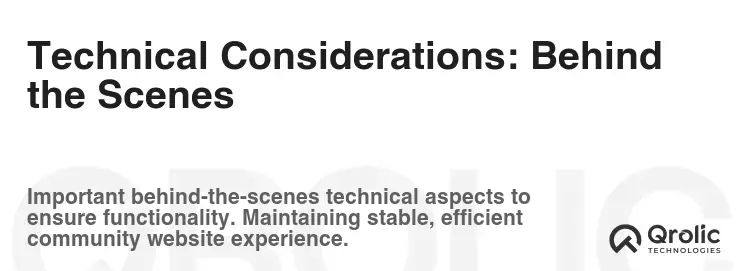
Beyond the features themselves, several technical considerations are crucial for a successful library website.
1. Mobile Responsiveness: Meeting Users Where They Are
Ensure your website is mobile responsive, meaning it adapts seamlessly to different screen sizes and devices. A significant portion of your users will access your website via smartphones and tablets.
2. Accessibility: Inclusive Design
Adhere to accessibility standards (WCAG) to ensure your website is usable by people with disabilities, including those with visual, auditory, motor, and cognitive impairments.
3. Security: Protecting User Data
Implement robust security measures to protect user data and prevent cyberattacks. This includes using HTTPS, regularly updating software, and implementing strong password policies.
4. Search Engine Optimization (SEO): Helping People Find You
Optimize your website for search engines (SEO) to improve its visibility in search results. This includes using relevant keywords, creating high-quality content, and building backlinks.
5. Website Performance: Speed and Reliability
Ensure your website is fast and reliable. slow loading times can frustrate users and drive them away. Optimize images, minimize code, and use a content delivery network (CDN) to improve performance.
Qrolic Technologies: Your Partner in Digital Transformation
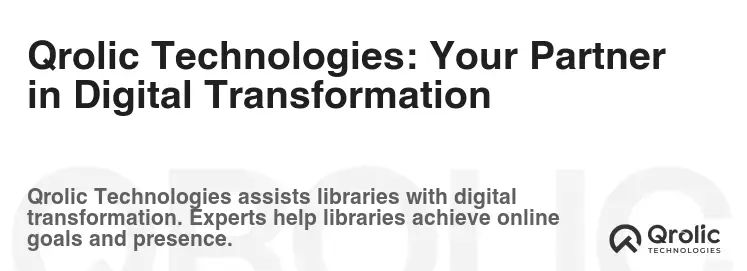
At Qrolic Technologies, we understand the unique needs of community libraries in the digital age. We specialize in developing and implementing custom website solutions that empower libraries to connect with their communities, provide access to resources, and promote lifelong learning.
How Qrolic Technologies Can Help:
- Website Design and Development: We create visually appealing, user-friendly, and mobile-responsive websites that reflect your library’s brand and mission.
- Digital Catalog Integration: We seamlessly integrate your library’s catalog with your website, providing users with easy access to your collection.
- Event Calendar Management: We develop robust event calendar systems that allow you to promote your programs and activities effectively.
- Online Resource Implementation: We help you implement and manage online resources, such as databases, e-learning platforms, and digital archives.
- Accessibility Compliance: We ensure that your website adheres to accessibility standards (WCAG) to be usable by people with disabilities.
- SEO Optimization: We optimize your website for search engines to improve its visibility in search results.
- Ongoing Support and Maintenance: We provide ongoing support and maintenance to ensure that your website is always up-to-date and functioning properly.
We believe that community libraries are vital institutions, and we are committed to helping them thrive in the digital age. Contact Qrolic Technologies today to learn how we can help you transform your library’s website into a powerful tool for community engagement and lifelong learning.
Conclusion: Investing in Your Community’s Future
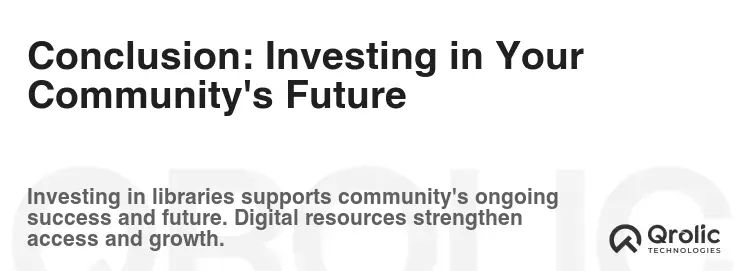
A well-designed and feature-rich website is no longer optional for community libraries; it’s essential for survival and growth. By investing in the right features and technical infrastructure, you can transform your website into a valuable resource that serves your community, extends your reach, and promotes lifelong learning. From the digital catalog to the event calendar and beyond, the features outlined in this article are your roadmap to creating a thriving digital library experience. So, take the leap and empower your community with the knowledge and resources they need to succeed in the 21st century. Your library’s future depends on it.
